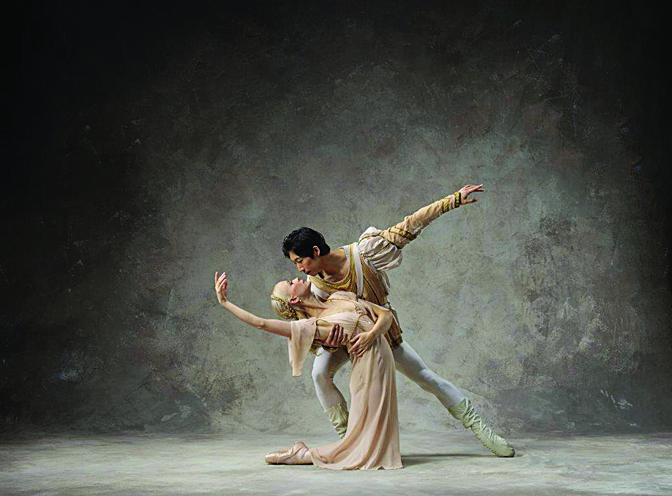Royal Winnipeg Ballet’s Romeo & Juliet
We are pleased to bring the timeless tale of love, loyalty, and fate to the stage with choreographer Rudi van Dantzig’s exquisite timeless ballet, Romeo & Juliet. Recognized alongside Giselle, Swan Lake, and The Sleeping Beauty as one of the great classical ballets, Romeo & Juliet’s world-premiere was presented by the Kirov Ballet in 1938. Set to a powerful and profound score by Sergei Prokofiev, Rudi van Dantzig was among the first non-Russian creators to develop new choreography for the work. His version was first performed by the Dutch National Ballet in 1967 and later given its Canadian premiere by the RWB in 1981.
Fall in love all over again with Shakespeare’s timeless romantic tragedy that remains a masterclass in balletic storytelling. Star-crossed lovers Romeo and Juliet defy the odds – and their feuding families – in pursuit of their happy ending while navigating the politics and intrigue of Renaissance Italy. Their love becomes their undoing as fate conspires to keep them apart. From innocence to tragedy to redemption, these larger-than-life characters demand remarkable acting and dancing that make this production one of the RWB’s crowning achievements. The splendour of sixteenth-century Verona unfolds in Toer van Schayk’s lush sets and costumes, complementing Rudi van Dantzig’s inventive choreography and sword fighting.

André Lewis, O.M., the RWB’s Artistic Director, believes firmly in the importance of the classics and this masterwork piece holds a special place in the history of the RWB. The late Rudi van Dantzig worked closely to pass the legacy of this work to Lewis, who has since become an in-demand stager for the production the world over.
Behind the Music
If Sergei Prokofiev felt any deep chords of affinity when composing the music for the ballet, Romeo & Juliet, he kept it his secret. Working with theatre director and Shakespeare expert Serge Radlov, and playwright Adrian Pyotrovsky, Prokofiev was stymied briefly by the troublesome detail of the heroine dying at the end of the play. As he reasoned most famously, “living people can dance, the dying cannot.”
The solution, initially, was to revise Shakespeare’s story with a happy ending, in which Romeo hears the news of Juliet’s feigned suicide in time to stop himself from prematurely shuffling off the mortal coil. Upon reconsideration, the tragic ending prevailed.
Like Tchaikovsky before him, Prokofiev defied the tradition that ‘ballet music’ be something handsome to hang in the background behind the real action. His music was integral to the action yet stout enough to stand on its own.
That said, the music for Romeo & Juliet astounds with its vivid yet calligraphic portraiture and keen invention. For example, the initial meditative quality to Romeo’s theme becomes passionate as the dreamy, romantic gives way to the blood-and-gristle lover. The purity of melody that introduces Juliet gradually assumes a hymnal sorrow as tragedy beckons. Portentous medieval horn figures accompany Juliet’s grim cousin, Tybalt, and the movements of the knights. For the balcony scene, Prokofiev summons a glorious swell of sound. The frenzy of a market dance finds a dizzying clarinet line making its way over elbows-out waltzing brass.
“Prokofiev created musical images whose influence on the development of ballet art is inestimable.” The late choreographer Leonid Lavrovsky
The RWB expresses its gratitude to Season Sponsor - Former RWB Chair James Cohen and Linda McGarva-Cohen; Live Music Benefactor – The Asper Foundation; Arts Partner – Winnipeg Symphony Orchestra; Student Performances Supporter – Richardson Foundation.
Romeo & Juliet takes centre stage from February 15-18, 2024 at the Centennial Concert Hall. It is also a great Valentine’s Day weekend gift idea. Get your preferred seats online now at rwb.org or call 204.956.2792 to buy tickets.


